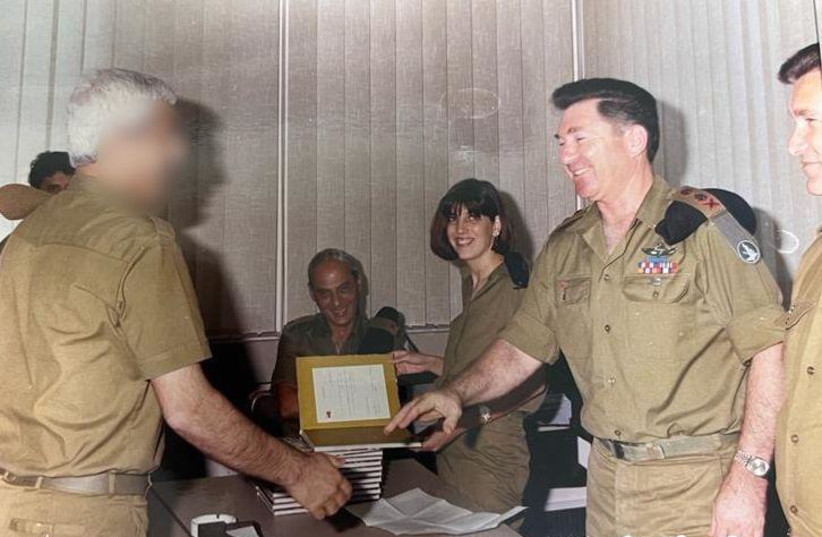Israel received critical Iran intel from IDF soldier’s 15-year side project
The establishment of the IDF Intelligence field for monitoring Iran owes its creation to an Iranian Israeli immigrant in the late 1960s who had prepared for Tehran’s transformation from Israel’s ally to its fiercest regional rival.
At the time, Iran was still ruled by the Shah. It was seen geopolitically as a modern and progressive nation, an ally to both the US and Israel alike. The eventual overthrowal of the monarchy and establishment of the Islamic Republic in 1979 was a turn of events that not many people had seen coming.
None, that is, except for this one soldier. Today, his identity is still classified among the ranks of the IDF’s Unit 8200. He is instead known only as SWO (res.) E.
How did Israel start collecting data on Iran before the revolution?
Growing up in Tehran, E. experienced antisemitism, still bearing a scar on his nose from being attacked by Muslim residents in the city when he was a child after he wore a Star of David necklace in public.
This prompted him to make aliyah in 1961, with he and his family ending up in a slum in Acre.
 IDF SWO (res.) E. is responsible for laying the groundwork for IDF Intelligence gathering on Iran thanks to a 15-year side project (Illustrative). (credit: IDF SPOKESPERSON’S UNIT)
IDF SWO (res.) E. is responsible for laying the groundwork for IDF Intelligence gathering on Iran thanks to a 15-year side project (Illustrative). (credit: IDF SPOKESPERSON’S UNIT)As he would recall later, he seems to have foreseen that Iran would later become an enemy of Israel.
“Many times, I ask myself ‘why?” Why did I feel like this country would become a threat?” E. recounted in an article shared on the IDF’s website. “Maybe it’s because of the beatings I suffered and the hatred I experienced. I know the Iranian people – I had to keep my Jewishness a secret. I knew that as soon as the Shah left, something would change – there was always latent antisemitism.”
One day, E. ended up accidentally ended up in line for recruitment for a clandestine military training program, making use of his fluency in Farsi and Arabic. That would eventually see him transferred into what would later become known as Unit 8200.
While he was supposed to be mainly monitoring communication broadcasts from Arab nations, he ended up one day listening in on a broadcast from the Iranian military.
“I took out my notebook and started writing,” E. recalled. “Even though Israel was on good terms with Iran and even though it wasn’t my job, I decided as a side project to try and figure out who was communicating here. I ended up identifying senior Iranian forces… and I said to myself, ‘This will come in handy someday.'”
E. ended up taking these notes over the course of 15 years, filling numerous notebooks and binders with this information. He even managed to get a map of Iran while on a trip back to Tehran.
This work would eventually prove invaluable. E. would build the first-ever Hebrew-Farsi military dictionary, based on his own records. At the time, the Hebrew-Farsi dictionaries publically available didn’t have any military terms or any way of translating ciphers.
The dictionary E. created is still the basis for what Unit 8200 uses to this day.
All of this would come to a head in the days leading up to the Islamic Revolution. Israel wanted to get information on who is leaving Iran in order to help Foreign Ministry diplomats to leave the country. As Unit 8200 managed to look into this, E. spotted a message that an Iranian plane referred to as the Farsi word for eagle has left the country – a term E. knew referred to the Shah’s royal plane.
In other words: E. had found out that the Sah fled the country. The revolution was here.
E. was then summoned by his commanding officer and he revealed that he had been monitoring Iranian communications for 15 years as a side project. That side project quickly became his full-time job, this time with new resources and the full attention of the Israeli military echelon.
The sense of urgency was reinforced by a car bombing in Lebanon that killed 59 IDF troops – the first major attack by a Shi’ite group against Israeli soldiers in the area.
E. then went on to build a team of people to help monitor Iranian communications. He looked for Iranian olim, fluent in both the language and the culture.
This gave birth to the Kochav platoon: A squad of top-notch radio operators well-versed in the threat posed by Iran. This group managed to become a pillar of IDF Intelligence, managing to track the movement of Iranian forces into Syria and Lebanon.
E. retired from the IDF in 1994. At the same time, Kochav was reorganized to become Unit 8200’s main Iranian arena.





Comments are closed.